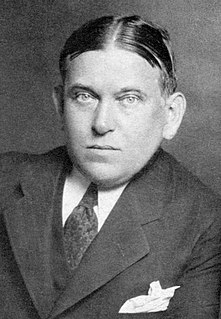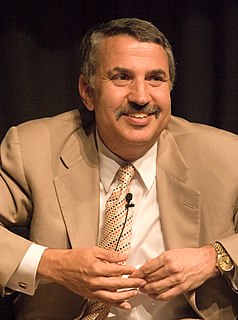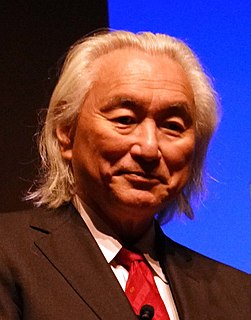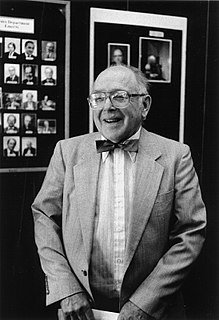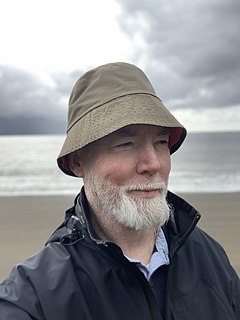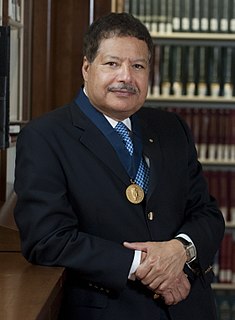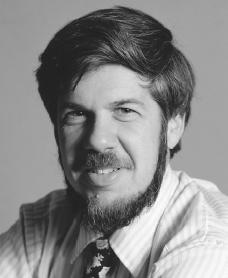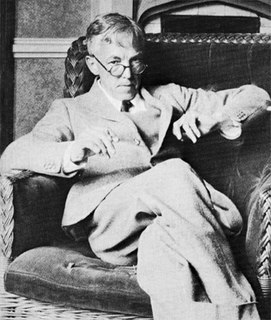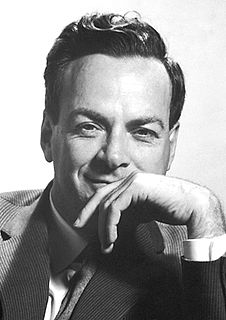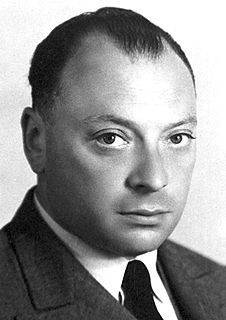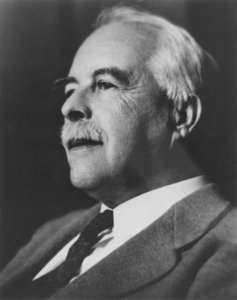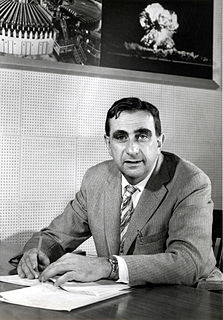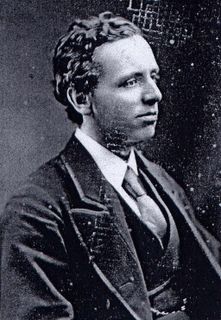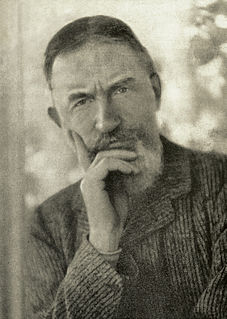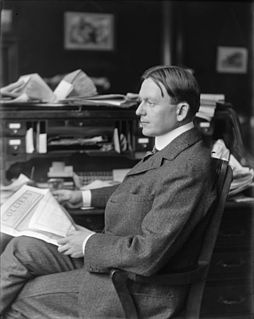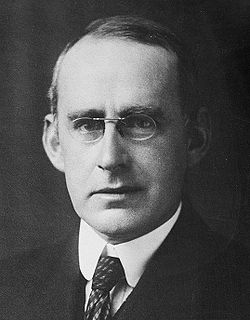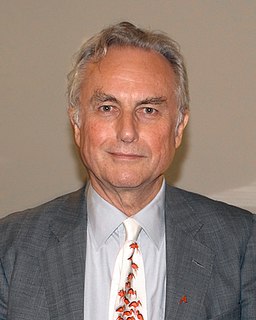Top 106 Electrons Quotes & Sayings - Page 2
Explore popular Electrons quotes.
Last updated on April 17, 2025.
Such is the art of writing as Dreiser understands it and practices it--an endless piling up of minutiae, an almost ferocious tracking down of ions, electrons and molecules, an unshakable determination to tell it all. One is amazed by the mole-like diligence of the man, and no less by his exasperating disregard for the ease of his readers.
Those clocks are sophisticated instruments that calculate time by measuring electrical charges called coulombs -- given the rapidity and volume of electrons that move through the measuring device the calibrator must adjust at certain points which was the delay you see -- the delay is just recalibrating for the clock moving too quickly during the 10 -- 10ths of a second before the delay -- this insures that the actual playing time during a period is exactly 20 minutes That is not an opinion -- that is science -- amazing devise quite frankly.
Memory runs along deep, fixed channels in the brain, like electricity along its conduits; only a cataclysm can make the electrons rear up in shock and slide over into another channel. The human mind seems doomed to believe, as simply as a rooster believes, that where we are now is the only possibility
At the end of the day, no amount of investing, no amount of clean electrons, no amount of energy efficiency will save the natural world if we are not paying attention to it - if we are not paying attention to all the things that nature give us for free: clean air, clean water, breathtaking vistas, mountains for skiing, rivers for fishing, oceans for sailing, sunsets for poets, and landscapes for painters. What good is it to have wind-powered lights to brighten the night if you can't see anything green during the day? Just because we can't sell shares in nature doesn't mean it has no value.
Philosophers often think all scientists must be scientific realists. If you ask a simple question like "Are electrons real?" the answer will be "Yes". But if your questions are less superficial, for example whether some well-known scientist was a good scientist. Then, they had insisted that only empirical criteria matter and that they actually did not believe in the reality of sub-atomic entities. Ask "If that turned out to be true, would you still say they were good scientists?" The answer would reveal something about how they themselves understood what it is to be a scientist.
As Heinz Pagels has said, The challenge to our civilization which has come from our knowledge of the cosmic energies that fuels the stars, the movement of light and electrons through matter, the intricate molecular order which is the biological basis of life, must be met by the creation of a moral and political order which will accommodate these forces or we shall be destroyed. It will try our deepest resources of reason and compassion.
There's stable subatomic particles - protons, neutrons, electrons - and then there's unstable ones that decay into stable ones. One will become many. There's this constant process of transformation that underlies everything in the entire universe. They also make these beautiful marks through time. It's like the universe was drawing, essentially, at this fundamental level. There's always an alphabet that's based in natural patterns. Sometimes they're just by themselves, sometimes they build up these other things that relate to the conception, that are more at our level of existence.
Over the last century, physicists have used light quanta electrons, alpha particles, X-rays, gamma-rays, protons, neutrons and exotic sub-nuclear particles for this purpose. Much important information about the target atoms or nuclei or their assemblage has been obtained in this way. In witness of this importance one can point to the unusual concentration of scattering enthusiasts among earlier Nobel Laureate physicists. One could say that physicists just love to perform or interpret scattering experiments.
I've got all my old laptops going back to my first, which was so fancy at the time, in '93 or '94, but now it's just like a doorstop. One day I said, 'I'll go in and get all my old documents in there.' The cords and the wires are all gone, the discettes you need are gone. Meanwhile the little electrons are starting to wither away.
I thought in my Nobel Lecture I pointed that I was delighted that the Swedish Academy of Science did not quote anything about my current work right now, because the current work that my group is focusing on is actually both the time resolve electrons and possibly x-rays to be able to get the architecture of these molecules, the molecular structures themselves, of very complex biological systems. That's the ultimate goal.
Historical science is not worse, more restricted, or less capable of achieving firm conclusions because experiment, prediction, and subsumption under invariant laws of nature do not represent its usual working methods. The sciences of history use a different mode of explanation, rooted in the comparative and observational richness in our data. We cannot see a past event directly, but science is usually based on inference, not unvarnished observation (you don't see electrons, gravity, or black holes either).
Mathematics is not only real, but it is the only reality. That is that entire universe is made of matter, obviously. And matter is made of particles. It's made of electrons and neutrons and protons. So the entire universe is made out of particles. Now what are the particles made out of They're not made out of anything. The only thing you can say about the reality of an electron is to cite its mathematical properties. So there's a sense in which matter has completely dissolved and what is left is just a mathematical structure.
Thus we can get the correct answer for the probability of partial reflection by imagining (falsely) that all reflection comes from only the front and back surfaces. In this intuitively easy analysis, the 'front surface' and 'back surface' arrows are mathematical constructions that give us the right answer, whereas .... a more accurate representation of what is really going on: partial reflection is the scattering of light by electrons inside the glass.
Today, nothing is unusual about a scientific discovery's being followed soon after by a technical application: The discovery of electrons led to electronics; fission led to nuclear energy. But before the 1880's, science played almost no role in the advances of technology. For example, James Watt developed the first efficient steam engine long before science established the equivalence between mechanical heat and energy.
A hundred years from now, people will look back on us and laugh. They'll say, 'You know what people used to believe? They believed in photons and electrons. Can you imagine anything so silly?' They'll have a good laugh, because by then there will be newer better fantasies... And meanwhile, you feel the way the boat moves? That's the sea. That's real. You smell the salt in the air? You feel the sunlight on your skin? That's all real. Life is wonderful. It's a gift to be alive, to see the sun and breathe the air. And there isn't really anything else.
With all reserve we advance the view that a supernova represents the transition of an ordinary star into a neutron star consisting mainly of neutrons. Such a star may possess a very small radius and an extremely high density. As neutrons can be packed much more closely than ordinary nuclei and electrons, the gravitational packing energy in a cold neutron star may become very large, and under certain conditions may far exceed the ordinary nuclear packing fractions.
After all, we scientific workers ... like women, are the victims of fashion: at one time we wear dissociated ions, at another electrons; and we are always loth to don rational clothing; some fixed belief we must have manufactured for us: we are high or low church, of this or that degree of nonconformity, according to the school in which we are brought up-but the agnostic is always rare of us and of late years the critic has been taboo.
What is beauty? Beauty is no more than a trick; a delusion; the influence of excited particles and electrons colliding in your eyes, jostling in your brain like a bunch of overeager school children, about to be released on break. Will you let yourself be deluded? Will you let yourself be decieved? -"On Beauty and Falsehood," The New Philosophy, by Ellen Dorpshire
The Universal mind is not only intelligence, but it is substance, and this substance is the attractive force which brings electrons together by the law of attraction so they form atoms; the atoms in turn are brought together by the same law and form molecules; molecules take objective forms and so we find that the law is the creative force behind every manifestation, not only of atoms, but of worlds, of the universe, of everything of which the imagination can form any conception.
...realize in your daily life that 'matter' is merely an aggregation of protons and electrons subject entirely to the control of Mind; that your environment, your success, your happiness, are all of your own making... All wealth depends upon a clear understanding of the fact that mind- thought - is the only creator. The great business of life is thinking. Control your thoughts and you control circumstance.
Whether looked at from outside or inside, bodies dissolve, matter vanishes, spirit remains - once we bother to go into the matter. "Spirit is the living body seen from within, and the body is the outer manifestation of the living spirit." Extend this statement by Carl Jung to all bodies from electrons to galaxies, and you have the ultimate physics
People believe, thought Shadow. It's what people do. They believe, and then they do not take responsibility for their beliefs; they conjure things, and do not trust the conjuration. People populate the darkness; with ghost, with gods, with electrons, with tales. People imagine, and people believe; and it is that rock solid belief, that makes things happen.
Can a physicist visualize an electron? The electron is materially inconceivable and yet, it is so perfectly known through its effects that we use it to illuminate our cities, guide our airlines through the night skies and take the most accurate measurements. What strange rationale makes some physicists accept the inconceivable electrons as real while refusing to accept the reality of a Designer on the ground that they cannot conceive Him?
I can now state that I have succeeded in operating a motive device by means of [cosmic rays]. I will tell you in the most general way, the cosmic ray ionizes the air, setting free many charges - ions and electrons. These charges are captured in a condenser which is made to discharge through the circuit of the motor.
A book, being a physical object, engenders a certain respect that zipping electrons cannot. Because you cannot turn a book off, because you have to hold it in your hands, because a book sits there, waiting for you, whether you think you want it or not, because of all these things, a book is a friend. It’s not just the content, but the physical being of a book that is there for you always and unconditionally.
Understanding human nature must be the basis of any real improvement in human life. Science has done wonders in mastering the laws of the physical world, but our own nature is much less understood, as yet, than the nature of stars and electrons. When science learns to understand human nature, it will be able to bring a happiness into our lives which machines and the physical sciences have failed to create.
Reagents are regarded as acting by virtue of a constitutional affinity either for electrons or for nuclei... the terms electrophilic (electron-seeking) and nucleophilic (nucleus-seeking) are suggested... and the organic molecule, in the activation necessary for reaction, is therefore required to develop at the seat of attack either a high or low electron density as the case may be.
Ladies and gentlemen, today we're here to honor electricity, the charge that charges everything from those electrons snapping in our brain to our father the sun. What's the sun It's kind of like a brain. Electromagnetic field, solar flares sparking back and forth from those nerve cells. We're all one, folks, giant blobs of electricity, all of us. Positive & negative, electromagnetic fields just circling each other. Positive, negative, north, south, male and female. Looking for that electric moment. Magnet to magnet, opposites attract.
For example, the idea that objects have properties out there in fixed ways is an incorrect idea about the world. Properties are created through relationships and processes. They are not inherent in electrons or photons or quanta any more than they are inherent in soil or trees or people. So my critique of reductionistic science is a critique that I have inherited from my scientific training. But it has been deepened by my experiences as an ecologist, in seeing the ecological destruction taking place today.
Indeed, nothing more beautifully simplifying has ever happened in the history of science than the whole series of discoveries culminating about 1914 which finally brought practically universal acceptance to the theory that the material world contains but two fundamental entities, namely, positive and negative electrons, exactly alike in charge, but differing widely in mass, the positive electron-now usually called a proton-being 1850 times heavier than the negative, now usually called simply the electron.
If the universe were just electrons and selfish genes, meaningless tragedies ... are exactly what we should expect, along with equally meaningless good fortune. Such a universe would be neither evil nor good in intention ... The universe we observe has precisely the properties we should expect if there is, at bottom, no design, no purpose, no evil and no good, nothing but blind pitiless indifference.
I notice that, in the lecture … which Prof. Lowry gave recently, in Paris … he brought forward certain freak formulae for tartaric acid, in which hydrogen figures as bigamist … I may say, he but follows the loose example set by certain Uesanians, especially one G. N. Lewis, a Californian thermodynamiter, who has chosen to disregard the fundamental canons of chemistry—for no obvious reason other than that of indulging in premature speculation upon electrons as the cause of valency
